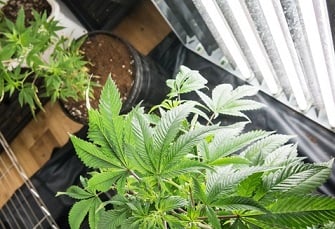Canada should keep on the look-out for the signs of market oversaturation that has plagued the Oregon marijuana market

As marijuana farmers in Oregon say a flood of supply is killing their businesses less than three years after recreational cannabis was legalized, economists argued that it’s a warning that Canada should take to heart.
Stephen Easton, professor of economics at Simon Fraser University and senior fellow at the Fraser Institute, said that large fluctuations in price and supply are bound to happen when you create a legal market where an illegal market already exists.
“There is no reason to think it won’t happen here as well. In a broader sense, we are adding legal production to an already robust illegal production,” Easton told The Canadian Press. “Consumption may simply not increase in proportion to our ability to grow.”
Oregon’s inventory of marijuana is staggering for a state its size. There are nearly 450,000 kilograms of usable flower in the system, and an additional 159,000 kilograms of marijuana extracts, edibles, and tinctures.
The Oregon Liquor Control Commission, which regulates the industry, said that some of the inventory of flower goes into extracts, oils, and tinctures, which have increased in popularity, but the agency can’t say how much.
Yet the retail price for a gram of pot has fallen about 50% since 2015 (from $14 to $7), according to a report by the Oregon Office of Economic Analysis.
Read more: Demand for Alberta commercial property intensifies amid looming legalization
Currently, there are 104 licensed marijuana producers in Canada, including 57 in Ontario and 22 in British Columbia.
As of May 11, Health Canada has already received 1,974 applications from producers and had refused 268, while others were in progress, incomplete, or withdrawn. The entire application process takes more than a year to complete.
Under the federal government’s proposed approach to cannabis, regulations would not prescribe a limit on the amount of cannabis a producer cultivates under a standard licence.
“However, the Minister of Health could establish a production limit as a condition of the licence if there were reasonable grounds to believe that a licensee was producing more cannabis than this licensee was able to sell, and that the excess inventory was at risk of being diverted to an illegal market or activity,” a November 2017 consultation paper by Health Canada says.
Werner Antweiler, professor of economics at the University of British Columbia’s Sauder School of Business, said that market fluctuations will depend on whether the government restricts licensing and prices.
Antweiler stressed that price controls can backfire. “That said, the danger is then, if prices are regulated and we have players trying to sneak around them and provide their product illegally at a lower price, that could lead to an undermining of the idea of liberalization, which is getting the market into the legal domain and preventing an illicit market from surfacing.”
“It’s much better to get it right from the beginning,” he stated, and decline to licence more producers than the estimated demand can support.
Related stories:
Okanagan commercial spaces go hot as cannabis market intensifies
Canadians remain ambivalent over the desirability of grow-ops – poll



